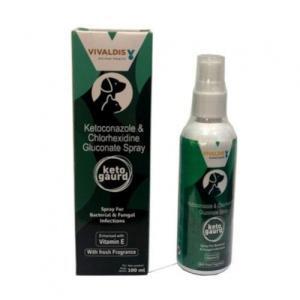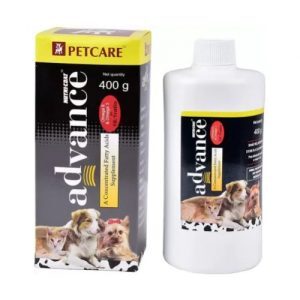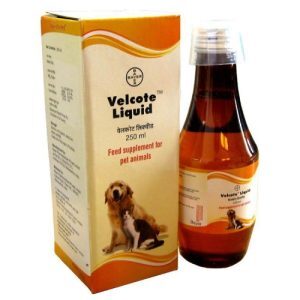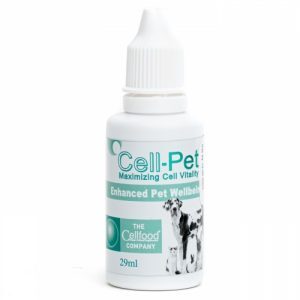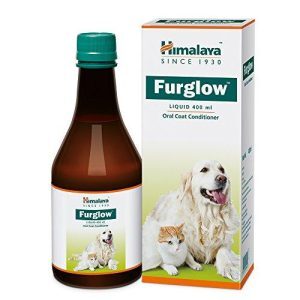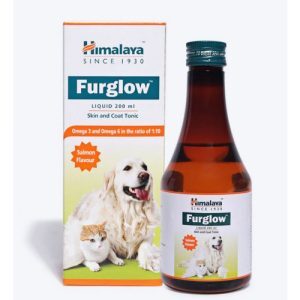Table of Contents
Atopic dermatitis, also known as canine atopic dermatitis or atopy, is a common skin condition in dogs. It is an allergic reaction that occurs when a dog’s immune system overreacts to certain allergens in the environment. These allergens can include pollen, dust mites, mold spores, certain types of food, and other substances.

What Is Atopic Dermatitis in Dogs?
Atopic dermatitis is a chronic condition that often persists over a long period and requires ongoing management. It is more commonly seen in certain dog breeds, such as Bulldogs, Boxers, Retrievers, and Terriers, although it can affect dogs of any breed.
If you suspect your dog may have atopic dermatitis, consult a veterinarian. They can perform a thorough examination, take a detailed medical history, and may recommend additional tests or allergy testing to determine the specific triggers causing your dog’s allergic reactions. Treatment options for atopic dermatitis may include allergen avoidance, medication to control itching and inflammation, topical treatments, special shampoos, home treatment for dermatitis in dogs, and immunotherapy (allergy shots) in some cases.
Causes of Dermatitis in Dogs
What causes atopic dermatitis in dogs?
Dermatitis in dogs can have various causes, including:
- Allergic dermatitis is one of dogs’ most common causes of skin inflammation. It can be caused by environmental allergens (such as pollen, dust mites, and mold spores) or food allergens (food allergy dermatitis in dogs). Allergic reactions in dogs often manifest as itching, redness, and skin inflammation.
- Infestation with fleas, ticks, mites (such as sarcoptic or demodectic mange mites), or lice can lead to dermatitis in dogs. These parasites can cause intense itching, skin irritation, and secondary infections.
- Contact with irritants like harsh chemicals, detergents, certain plants, or grooming products can cause contact dermatitis in dogs. This type of dermatitis typically affects the areas of the skin that come into direct contact with the irritant.
- Bacterial or fungal infections of the skin can cause dermatitis in dogs. These infections may occur as secondary conditions resulting from scratching, self-trauma, or underlying allergies.
- Some autoimmune disorders like pemphigus or lupus can cause dog dermatitis. These conditions occur when the immune system mistakenly attacks the dog’s skin, leading to inflammation and skin lesions.
- Hormonal disorders, such as hypothyroidism or Cushing’s disease, can affect the skin and coat, leading to dermatitis.
- Environmental factors like excessive humidity, heat, or exposure to sunlight can contribute to dog dermatitis.
A dog’s specific cause of dermatitis may require a proper diagnosis by a veterinarian. A thorough examination, medical history, and additional diagnostic tests can help determine the underlying cause of dermatitis, allergic contact dermatitis in dogs and guide appropriate treatment. Ask your veterinarian how to deal with contact dermatitis in dogs and how to treat skin fold dermatitis in dogs.
Symptoms of Atopic Dermatitis in Dogs
What are the symptoms of dermatitis in dogs?
The symptoms of atopic dermatitis in dogs can vary from individual to individual, but common signs and symptoms include:
- Intense itching: Itching is one of the hallmark symptoms of atopic dermatitis. Dogs with this condition often scratch, bite, lick (lick dermatitis in dogs), or chew at their skin excessively. The itching can be generalized or localized to specific areas of the body.
- Redness and inflammation: Affected areas of the skin may appear red, inflamed, or irritated. This can be particularly noticeable in the armpits, groin, paws, ears (ear tip dermatitis in dogs), face, and belly. The skin may feel warm to the touch.
- Skin lesions: Continuous scratching and rubbing can lead to skin lesions, such as sores, scabs, or open wounds. These lesions can be prone to infection and may result in crusting or oozing.
- Hair loss: Due to persistent itching and self-trauma, dogs with atopic dermatitis may experience hair loss or thinning of the coat in the affected areas. This can lead to patchy or uneven hair distribution.
- Ear problems: Atopic dermatitis can predispose dogs to ear infections. The ears may become inflamed and itchy and produce an abnormal discharge. Dogs may shake their heads or show signs of discomfort.
- Face rubbing: Dogs with atopic dermatitis often rub their faces against furniture, carpets, or other surfaces to relieve itching. This can result in reddened or irritated areas on the face.
- Foot licking: Itchy paws are common in dogs with atopic dermatitis, and they may excessively lick or chew at their feet. This can lead to redness, inflammation, and even sores between the toes.
These symptoms can also be seen in other skin conditions, so it’s crucial to consult a veterinarian for an accurate diagnosis.
Diagnosis
How to diagnose dermatitis in dogs?
When testing a dog for allergies, veterinarians may use several methods. The specific tests conducted will depend on the suspected allergens and the veterinarian’s recommendations. Here are some common allergy tests for dogs.
Intradermal Skin Testing
Intradermal testing, also known as skin testing, is considered the gold standard for diagnosing environmental allergies in dogs. It involves injecting small amounts of various allergens into the skin and observing the dog’s response. The veterinarian will shave a small area on the dog’s side or flank, number the sites, and inject small amounts of allergens. If the dog is allergic to any substances, a localized allergic reaction, such as redness and swelling, known as a wheal and flare reaction, will occur. This helps identify the specific allergens to which the dog is allergic.
Blood Testing
Blood tests can detect specific antibodies in a dog’s blood that indicate an allergic reaction. The two primary types of blood tests used are:
- Enzyme-Linked Immunosorbent Assay (ELISA): ELISA tests measure the levels of specific antibodies in the dog’s blood, such as IgE or IgG. Elevated levels of these antibodies can indicate an allergic response to specific allergens.
- Serum Allergen-Specific IgE Testing: This test measures the levels of allergen-specific IgE antibodies in the dog’s blood. It helps identify which allergens the dog is sensitized to and can help guide allergy management.
Food Elimination Tria
If food allergies are suspected, an elimination diet may be recommended. The dog is fed a diet consisting of novel protein and carbohydrate sources, such as venison and potato or hydrolyzed protein, for a fixed period. Individual food ingredients are gradually reintroduced if the symptoms improve to identify the specific allergen.
These tests should be conducted by a veterinarian or veterinary dermatologist who can interpret the results accurately and determine the best course of action. They will consider the dog’s clinical signs, medical history, and the results of the tests to develop an appropriate treatment plan, which may involve allergen avoidance, medication, immunotherapy, or dietary changes.
Treatment for Atopic Dermatitis in Dogs
How to treat allergic dermatitis in dogs?
The treatment for atopic dermatitis in dogs aims to manage the symptoms, reduce inflammation, relieve itching, and improve the dog’s quality of life. The specific treatment plan will depend on the severity of the condition and the individual dog’s needs. Here are some common approaches to treating atopic dermatitis in dogs:
- Allergen Avoidance: Identifying and minimizing exposure to allergens that trigger the dog’s symptoms is important in managing atopic dermatitis. This may involve keeping the dog indoors during high-pollen seasons, using allergen-proof bedding, using hypoallergenic or medicated shampoos, and avoiding known food allergens.
- Medications: Various medications can be used to control itching, reduce inflammation, and manage secondary infections. These may include antihistamines, corticosteroids, immunosuppressive drugs, topical treatments, antibiotics or antifungal medications.
- Immunotherapy (Allergy Shots): This involves administering gradually increasing doses of specific allergens to the dog over time to desensitize the immune system and reduce allergic reactions. Immunotherapy is typically administered through regular injections or sublingual drops under veterinary supervision.
- Fatty Acid Supplements: Omega-3 fatty acid supplements, such as fish oil, may help improve the skin barrier function and reduce inflammation in dogs with atopic dermatitis. They can be given orally or added to the dog’s diet.
- Therapeutic Diets: Special hypoallergenic or novel protein diets may be recommended if food allergies are suspected of triggering atopic dermatitis. These diets use limited ingredients to minimize the chance of an allergic reaction.
- Environmental Modifications: Environmental changes, such as using air purifiers, frequent bathing with hypoallergenic shampoo for atopic dermatitis in dogs, or avoiding certain cleaning products, may help reduce exposure to allergens and alleviate symptoms.
What is the best treatment for atopic dermatitis in dogs?
Keto Guard (Ketoconazole, Chlorhexidine Gluconate) 1%/2% 100ml
Keto Guard Spray is a topical medication used in dogs to treat various skin conditions, including dermatitis, fungal and bacterial infections. It contains two active ingredients: ketoconazole and chlorhexidine gluconate.
Ketoconazole is an antifungal medication that works by inhibiting the growth of fungi. It is effective against many fungal organisms, including Malassezia species, commonly associated with dog skin infections. Ketoconazole helps control fungal overgrowth and reduces the symptoms of itching, redness, and inflammation.
Chlorhexidine gluconate is an antiseptic and antimicrobial agent that helps combat bacterial infections on the skin. It is effective against both gram-positive and gram-negative bacteria, including Staphylococcus and Streptococcus species, which can contribute to skin infections. Chlorhexidine helps prevent the growth and spread of bacteria, reducing the risk of secondary infections and promoting healing.
Keto Guard Spray is typically used in the following scenarios:
- Fungal Infections: It can treat fungal skin infections caused by organisms such as Malassezia. These infections often present as itching, redness, and greasy or flaky skin.
- Bacterial Infections: The spray can help manage bacterial infections of the skin, including pyoderma. It aids in reducing inflammation, preventing the spread of bacteria, and promoting healing.
- Hot Spots: Hot spots, also known as acute moist dermatitis, are localized areas of inflamed, infected, and irritated skin. Keto Guard Spray can be used to alleviate the symptoms, promote healing, and prevent secondary infections.
A veterinarian should determine the frequency of application and duration of use, as it depends on the severity of the condition and the individual dog’s response. Typically, the spray is applied to the affected area(s) of the dog’s skin, ensuring good coverage. It is important to follow the specific instructions provided by the veterinarian or indicated on the product label.
Benefits of Keto Guard Spray
- Antifungal and antimicrobial action: It helps combat fungal and bacterial infections, reducing symptoms and promoting healing.
- Anti-inflammatory properties: The ingredients in the spray help reduce inflammation, providing relief from itching, redness, and irritation.
- Easy application: The spray formulation allows for convenient and targeted application to the affected areas, ensuring good coverage and absorption.
Nutri-Coat Advance (Omega 3, Omega 6) 200g, 400g
Nutri-Coat Advance (Omega 3, Omega 6) is feed supplements commonly used in dogs with dermatitis to provide essential fatty acids that can help improve skin and coat health. It contains two active ingredients: Omega-3 fatty acids and Omega-6 Fatty Acids.
The primary Omega-3 fatty acids used in dog supplements are eicosapentaenoic acid (EPA) and docosahexaenoic acid (DHA). These fatty acids are typically derived from fish oil or other marine sources.
The primary Omega-6 fatty acid used in dog supplements is linoleic acid, often derived from plant-based oils.
Purpose and Use:
- Dermatitis Support: Omega-3 and Omega-6 fatty acids can help manage dermatitis in dogs by reducing inflammation, soothing itchy skin, and promoting a healthy skin barrier.
- Skin and Coat Health: These fatty acids contribute to maintaining healthy skin and a shiny coat, helping to alleviate symptoms associated with dermatitis, such as dryness, flakiness, and dull coat.
Benefits:
-
Anti-inflammatory Effects: Omega-3 fatty acids, specifically EPA and DHA, have anti-inflammatory properties that can help alleviate inflammation in the skin and reduce itching and redness.
-
Moisturize and Nourish Skin: Omega-6 fatty acids, such as linoleic acid, help to maintain the skin’s moisture and strengthen the skin barrier function, improving overall skin health.
-
Support Immune Function: Both Omega-3 and Omega-6 fatty acids support a healthy immune system, which can be beneficial for dogs with dermatitis.
Differences from Other Similar Remedies:
Each 10 g contains 6600mg of Omega 6 (Linoleic acid) and 6600mg of Omega 3 (Linolenic acid).
Velcote (Vitamins A, D3, E) 250 ml
Velcote Liquid is a nutritional supplement for dogs that contains vitamins A, D3, and E. It is designed to support and maintain healthy skin in dogs. The supplement’s combination of vitamins A, D3, and E is believed to have beneficial effects on the skin, including reducing inflammation, promoting skin healing, and enhancing the skin’s natural barrier function.
It contains 3 active ingredients. Vitamin A is commonly provided as retinyl acetate or retinyl palmitate in canine supplements. The active form of vitamin D3 is cholecalciferol, which is synthesized by the body when the skin is exposed to sunlight or obtained from dietary sources. The active form of vitamin E is alpha-tocopherol, which is a fat-soluble vitamin with antioxidant properties.
Benefits:
- Vitamin A: Vitamin A plays a vital role in maintaining the health of skin and mucous membranes. It is involved in skin cell growth and differentiation, which helps maintain healthy skin and supports its natural defenses.
- Vitamin D3: Vitamin D3 is essential for calcium absorption and bone health. It also has immunomodulatory effects and plays a role in maintaining healthy skin.
- Vitamin E: Vitamin E is an antioxidant that helps protect cells from damage caused by free radicals. It contributes to skin health by protecting it from oxidative stress and promoting tissue repair.
Differences from Other Similar Remedies:
- Provides healthy-looking coat and skin.
- Treats skin disorders characterized by dryness and scaliness.
- Controls non-seasonal hair shedding and improves alopecia (Hair Loss) of nutritional origin.
Cell-Pet Enhanced (Oxygen, Minerals, Enzymes, And Amino Acids) 10 ml
Cell-Pet Enhanced liquid concentrate that includes oxygen, minerals, enzymes, and amino acids may aim to support overall skin health in dogs. Combining these ingredients may support the skin’s natural healing processes and help manage dermatitis symptoms.
Benefits:
- Oxygen: Oxygen can play a role in promoting tissue oxygenation and aiding in cellular metabolism, which may contribute to overall skin health.
- Minerals: Minerals are essential for various physiological functions, including skin health. They may support the skin’s structural integrity and enzymatic processes.
- Enzymes: Enzymes are involved in various biological reactions and can aid in the breakdown and utilization of nutrients. They may contribute to healthy cellular processes in the skin.
- Amino Acids: Amino acids are the building blocks of proteins and are crucial for skin cell repair and regeneration. They may support the healing and maintenance of healthy skin.
Differences from Other Similar Remedies:
- 95% absorption into the bloodstream.
- Develops bones.
- Facilitates digestion.
- Boosts immunity system.
Furglow Oral Coat Conditioner (Vitamin A, Vitamin E, Selenium, Zinc) 200ml
Furglow Oral Coat Conditioner is a product specifically formulated to improve the condition of a dog’s coat and skin. The supplement’s combination of vitamin A, vitamin E, selenium, and zinc may benefit the skin, promoting skin healing, reducing inflammation, and supporting a healthy coat.
Vitamin A is commonly provided as retinyl acetate or retinyl palmitate in canine supplements.
The active form of vitamin E is alpha-tocopherol, a fat-soluble vitamin with antioxidant properties.
Selenium is typically provided as organic selenium, such as selenomethionine, in supplements for better absorption.
Zinc is typically provided as zinc sulfate, zinc gluconate, or zinc methionine in supplements.
Benefits:
- Vitamin A: Vitamin A is essential for maintaining the skin’s health, promoting cell growth and differentiation, and supporting the immune system’s function.
- Vitamin E: Vitamin E is an antioxidant that helps protect cells from damage caused by free radicals. It contributes to skin health by reducing oxidative stress and supporting tissue repair.
- Selenium: Selenium is a trace mineral that acts as an antioxidant and is involved in various enzymatic processes. It supports the immune system and contributes to skin health.
- Zinc: Zinc is a mineral that plays a crucial role in skin health, including wound healing, maintaining the integrity of the skin barrier, and supporting immune function.
Differences from Other Similar Remedies
- Provides a shiny and glossy coat.
- Treats hair shedding, flaky skin, and dandruff.
- Helps to treat allergic skin conditions like flea bites and atopy (flea bite dermatitis in dogs).
Furglow Skin And Coat Tonic (Minerals, Vitamin A, Vitamin E, Selenium, Zinc) 200 ml
Furglow Skin and Coat Tonic is a product designed to promote the health of a dog’s skin and coat. Combining minerals, vitamin A, vitamin E, selenium, and zinc in the tonic may benefit the skin, promoting healing, reducing inflammation, and supporting a healthy coat.
Benefits:
- Minerals play essential roles in various physiological processes, including skin health. They contribute to maintaining the integrity of the skin barrier, supporting enzymatic functions, and promoting overall skin health.
- Vitamin A is crucial for skin health, supporting cell growth and differentiation, and promoting a healthy immune system.
- Vitamin E is an antioxidant that helps protect cells from oxidative damage. It contributes to skin health by reducing inflammation and supporting tissue repair.
- Selenium is a trace mineral that is an antioxidant and supports immune function. It plays a role in maintaining healthy skin and protecting against oxidative stress.
- Zinc is an important mineral in various enzymatic reactions for skin health. It supports wound healing, maintains the integrity of the skin barrier, and contributes to immune function.
Differences from Other Similar Remedies:
- Stimulates hair growth and alleviates dandruff.
- Enhances coat shine and luster.
- Suitable tonic for various allergic skin conditions and recurring infections.
- Contains Vitamin A, Vitamin E, Vitamin B6, Biotin, and Vitamin D.
- Supports healthy, nourished skin and helps combat hair loss.
For detailed information on the products we mentioned, including their specific active ingredient concentrations, usage instructions, and any differences from other remedies, it’s best to refer to the product label or consult a veterinarian or the manufacturer directly. They can provide accurate and specific information based on the particular product.
How to Prevent Dermatitis
Preventing dermatitis in dogs involves various measures to maintain their skin health and minimize potential triggers.
Regularly brush your dog’s coat to remove loose hair, dirt, and debris. This helps prevent matting and allows air circulation, reducing the risk of skin irritation.
Use a mild, dog-specific shampoo and bathe your dog as needed, following the instructions. Avoid excessive bathing, as it can strip the skin of its natural oils and lead to dryness and irritation.
Feed your dog a balanced diet that meets their nutritional needs. A healthy diet supports overall skin health and can help prevent certain types of dermatitis. Consult with a veterinarian to determine the appropriate diet for your dog.
Identify and minimize exposure to potential allergens that may trigger dermatitis in your dog. Common allergens include certain foods, pollen, dust mites, and fleas (flea bite dermatitis in dogs). Take preventive measures such as using flea control products and home remedy for flea dermatitis in dogs, keeping the environment clean, treating dermatitis in dogs naturally, and considering an elimination diet if food allergies are suspected. Also, ask veterinarians how to treat atopic dermatitis in dogs naturally.
Be mindful of substances that can irritate your dog’s skin, such as harsh chemicals, detergents, or certain types of bedding. Use pet-safe cleaning products and provide your dog with a comfortable, hypoallergenic bed.
Schedule regular visits to the veterinarian for routine check-ups. They can assess your dog’s overall health and detect any skin issues early on. Follow their advice on preventive measures and treatments for your dog’s needs.
Protect your dog’s skin from extreme weather conditions. Provide appropriate shelter, avoid prolonged exposure to harsh sunlight or extreme temperatures, and consider using protective clothing or sunscreen when necessary.
Minimize stress in your dog’s life, as stress can contribute to skin issues. Provide a calm and safe environment, engage in regular exercise and mental stimulation, and offer comforting routines.
Ensure your dog is protected against fleas, ticks, and other external parasites. Consult your veterinarian about appropriate preventive measures for your location, home remedy for atopic dermatitis in dogs, and your dog’s lifestyle.
FAQ
At what age can dogs get dermatitis?
Dogs can develop dermatitis at any age, from puppies to adults and even seniors. Some forms of dermatitis, such as atopic dermatitis, are more commonly seen in certain breeds and may have a genetic predisposition. However, the onset of dermatitis can be influenced by various factors, including allergies, environmental irritants, parasites, and underlying health conditions.
Does atopic dermatitis go away?
Atopic dermatitis is a chronic condition that typically persists throughout a dog’s life. While there is no cure for atopic dermatitis, it can be managed and controlled through various treatment options and lifestyle adjustments. With proper management, including identifying and avoiding triggers, using medications or supplements as prescribed by a veterinarian, and providing appropriate skin care, the symptoms of atopic dermatitis can be reduced and controlled, improving the dog’s quality of life.
What does atopic dermatitis look like in dogs?
Atopic dermatitis in dogs can present with various symptoms, and individual signs may vary. Common signs include:
- Itching (pruritus), scratching, biting, licking, and rubbing of the affected areas.
- Redness (erythema).
- Hair loss.
- Skin lesions.
How long does dermatitis last in dogs?
The duration of dermatitis in dogs can vary depending on the underlying cause and how well it is managed. Acute episodes of dermatitis, such as those caused by contact irritants or allergic reactions, may last for a few days to weeks if the triggering factor is identified and eliminated. However, chronic dermatitis, such as atopic dermatitis, may persist for the dog’s lifetime but can be managed with appropriate treatment.


